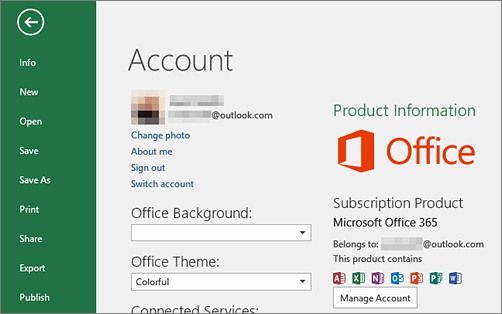Microsoft Office 2016 (codenamed Office 16) is a version of the Microsoft Office productivity suite, succeeding both Office 2013 and Office for Mac 2011 and preceding Office 2019 for both platforms. It was released on macOS on July 9, 2015, and on Microsoft Windows on September 22, 2015, for Office 365 subscribers. Mainstream support ended on October 13, 2020, and most editions have extended. Download Grammarly for Microsoft Word on Mac or Windows and write better, clearer documents. Collaborate for free with online versions of Microsoft Word, PowerPoint, Excel, and OneNote. Save documents, spreadsheets, and presentations online, in OneDrive. If you purchased an Office Professional Plus 2013/2016/2019, Office Home & Business for Mac 2016/2019, Visio Professional 2013/2016/2019, or Project Professional 2013/2016/2019 on www.microsofthup.com, you can use the field above to request your installation information and product key(s). Office 2016 include applications such as Word, Excel, PowerPoint, and Outlook. They’re available as a one-time purchase for use on a single PC. Microsoft 365 plans include premium versions of these applications plus other services that are enabled over the Internet, including online storage with OneDrive and Skype minutes for home use.
Note
Office 365 ProPlus is being renamed to Microsoft 365 Apps for enterprise. For more information about this change, read this blog post.
Symptoms
When you try to activate or sign in to any of the Microsoft Office 2016 applications after you install the version 15.33 update, you receive a blank authentication screen. Additionally, you may see any of the following symptoms.
Symptom 1
The following issues occur in the Unified Logging Service (ULS) log:
- The server has redirected to a non-https URL.
- Errors occur in Azure Active Directory Authentication Library (ADAL) authentication.
To locate the ULS log, open Finder and browse to the following path:

~/Library/Containers/com.microsoft.<Application>/Data/Library/Caches/Microsoft/uls/com.microsoft.<Application>/logs
Note <Application> represents the name of the application that you are troubleshooting.
Symptom 2
You notice that in an HTTP trace, the server response includes multiple WWW-Authenticate headers, such as the following:
Office 2016 Mac Skip Sign In Microsoft
WWW-Authenticate: Negotiate
WWW-Authenticate: NTLM
Cause
The symptoms occur for the following corresponding reasons:
Cause for symptom 1
Starting from Office 2016 for Mac version 15.33, unsecured endpoint traffic is blocked in authentication flows.
Cause for symptom 2

Starting from Office 2016 for Mac version 15.33, the authentication method no longer selects NTLM authentication when multiple WWW-Authenticate headers are present in the response. The issue occurs when the selected authentication method is unsuccessful.
Resolution
Resolution for symptom 1
Configure all authentication endpoints to use the Secure Sockets Layer (SSL) protocol.
Resolution for symptom 2
Install the September 2017 update for Office 2016 for Mac version 15.38.
More Information
More information for symptom 1
The resolution applies when you use Microsoft Active Directory Federation Services or non-Microsoft federation solutions.
Mac Office 2016 Update
-->Original KB number: 3007307
Symptoms
When you open your Calendar in Microsoft Outlook 2016 for Mac, the Open Shared Calendar button on the ribbon is unavailable.
Additionally, when you point to Open on the File menu, the Calendar option is unavailable.
Cause
This issue occurs if the Group similar folders, such as Inboxes, from different accounts check box is selected and the Hide On My Computer folders check box is cleared in General Preferences.
Workaround
To work around this issue, use one of the following methods:
Select the Exchange folder in My Calendars.
Open the calendar.
Expand My Calendars to display the Exchange mailbox calendar, the On My Computer calendar, and calendars that are associated with any other accounts that are open in Outlook for Mac.
Select the Exchange check box.
After you do this, the Open Shared Calendar button on the ribbon is available.
Open another user's Calendar.
On the File menu, point to Open, and then select Other Users Folder.
Search for and then select the user whose calendar you want to open.
In the Folder Type box, select Calendar.
Select Open.
Change the preferences settings that are related to the On My Computer folders.
- On the Outlook menu, select Preferences.
- Select General.
- Clear the Group similar folders, such as Inboxes, from different accounts check box.
- If you want, select the Hide On My Computer folders check box.